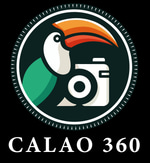The impact of 360° virtual tours in the tourism sector
Explore how tourist sites, museums, and monuments are using 360° technology to attract visitors worldwide and improve their visibility.


The tourism sector is one of the biggest beneficiaries of 360° virtual tours. Whether for historic monuments, museums, amusement parks, or vacation destinations, virtual tours allow travelers to discover a place before they even set foot there. This pre-immersion in the space allows visitors to better visualize the atmosphere and gain a clearer idea of what to expect, which can directly influence their travel decisions.
Museums can use 360° tours to offer an interactive experience of their permanent collections or temporary exhibitions. This allows visitors to virtually move around exhibition halls, zoom in on works of art, and even listen to audio commentary or read additional information. These experiences provide easy access to works of art, attracting a wider audience and maximizing exhibition visibility, even remotely.
Tourist sites and travel destinations can also leverage this technology to offer virtual tours of must-see locations, giving travelers a taste of the experience without having to travel. This can pique the interest of those who hadn't previously considered the destination, making them more likely to book their ticket.
Contact
© 2024. All rights reserved CALAO 360.
+225 27 24 36 06 87
links
+225 07 79 161 020
Riviera Faya Ephrata à l'immeuble symphonium


